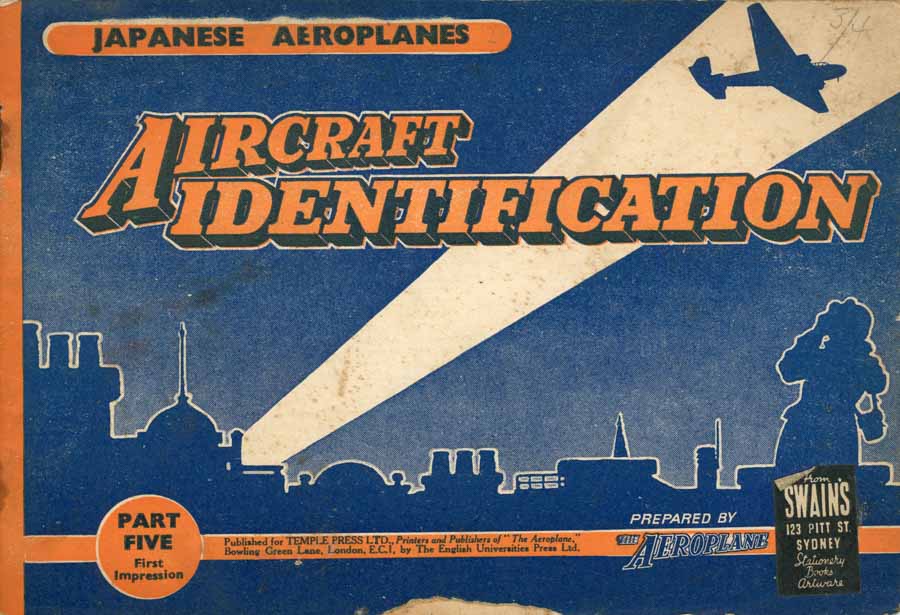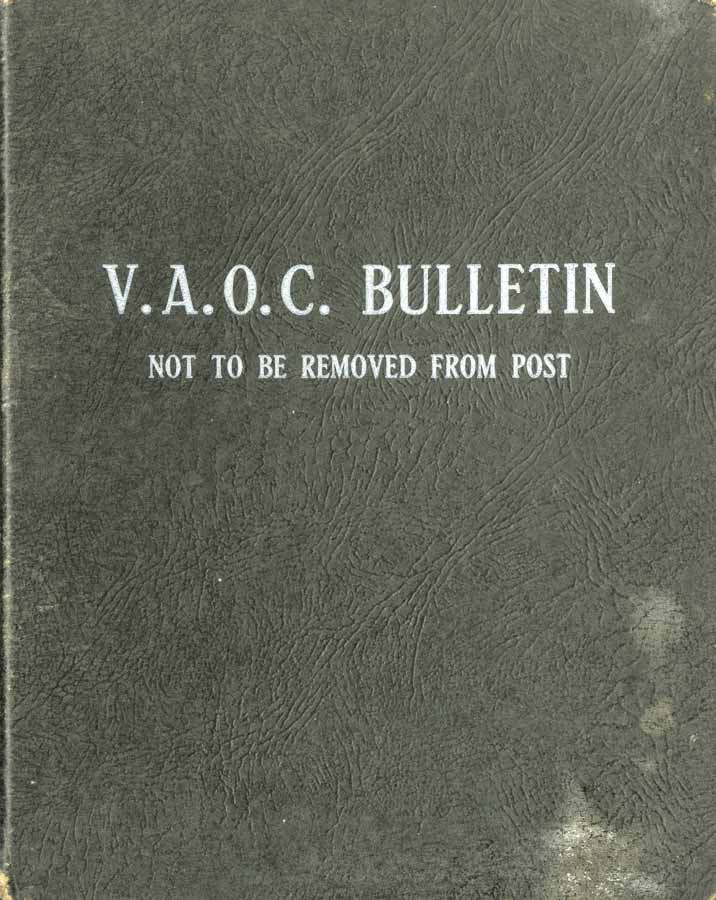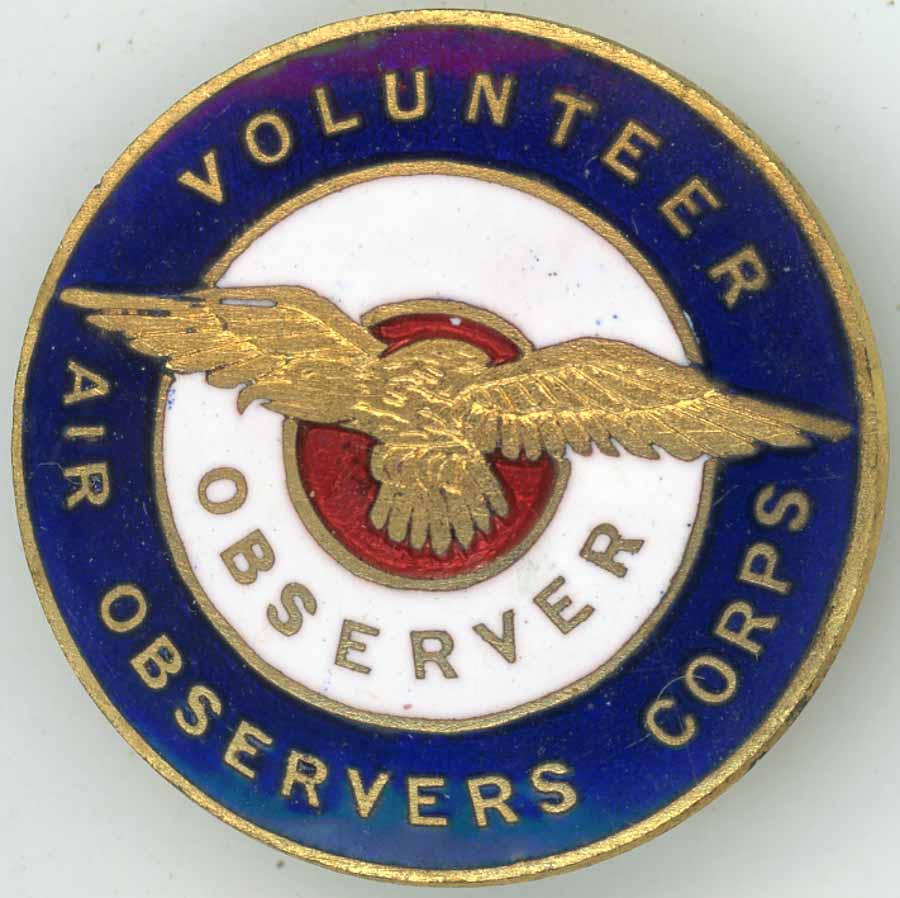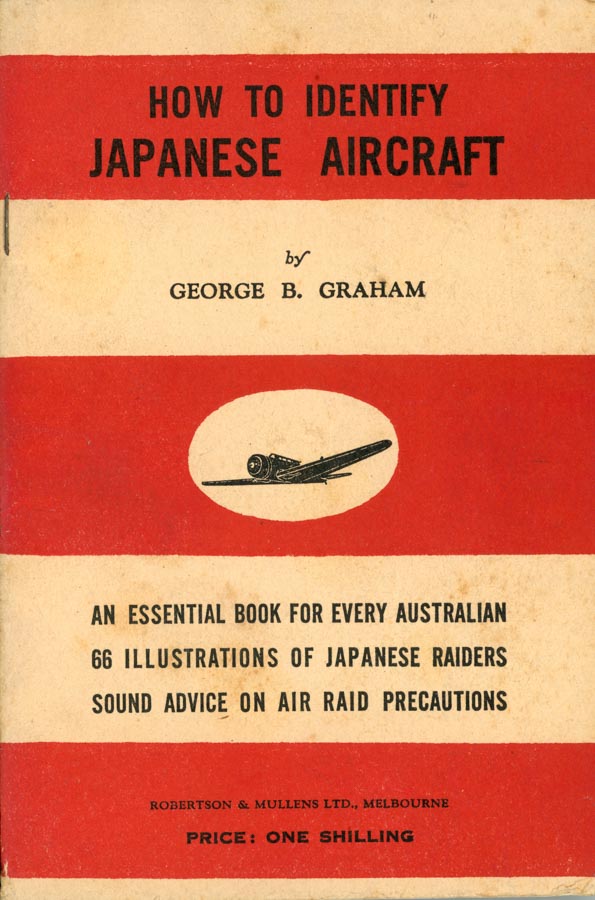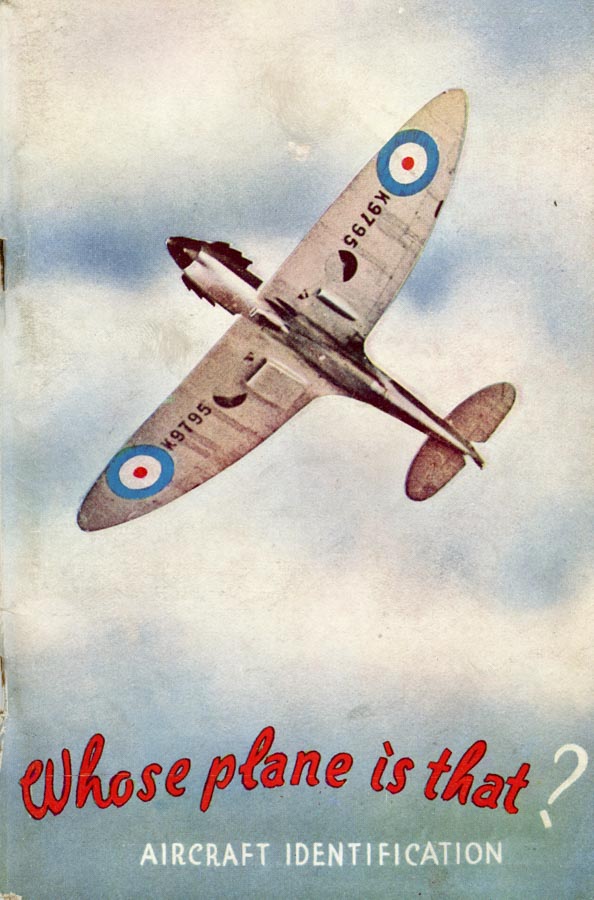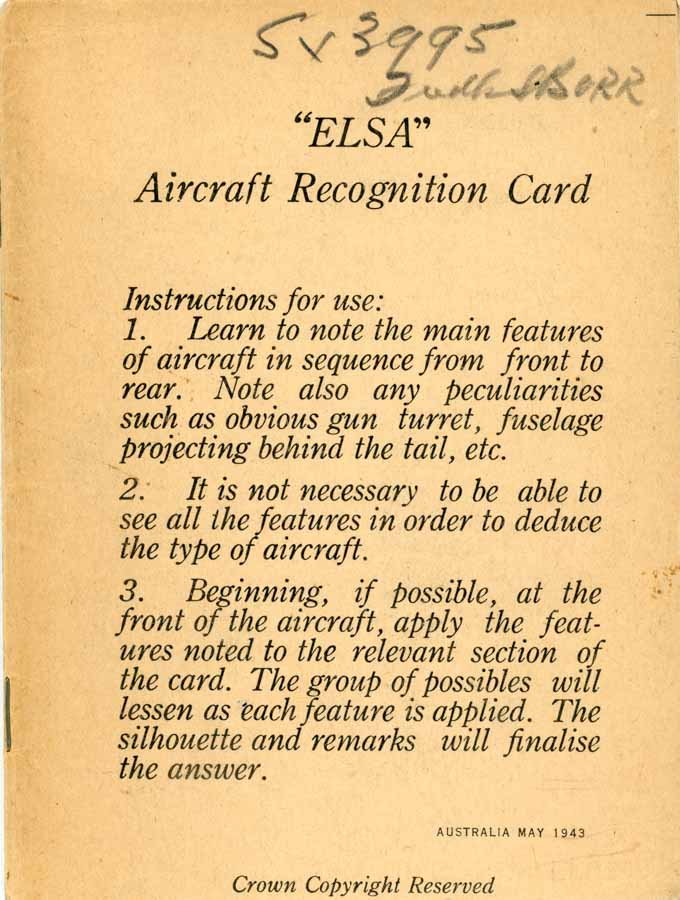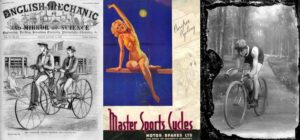ONE of Australia’s military problems in World War 2 was trying to keep track of the movements of large numbers of aircraft over the giant land-mass. Planes, both friendly and hostile, crossed the skies at all hours, and it was important to try to keep tabs on as many of them as possible.
A big part of the solution was the Volunteer Air Observers Corps, an organisation of thousands of civilian men, women and children who spent untold hours in observation posts they built on top of houses, on handyman-created towers in backyards, in the middle of remote paddocks and wherever else the air force directed them. The VAOC was hurriedly formed in December 1941, shortly after Japan’s spectacular entry into the war, and at its peak it is said to have had about 24,000 members and 2656 observation posts across the country. Their job was to keep watch, 24 hours a day, and report every movement of every aircraft they saw or heard to their nearby zone control post. These posts, often established in commandeered public facilities, were in direct contact with the RAAF. Important centres of population and industry were surrounded by rings of observation posts.
To begin with, the idea of the VAOC was to help defence authorities track the movement of Japanese aircraft, although Australia’s scanty air force wasn’t equipped to do much about early enemy incursions. As the war progressed and planes came in from Britain and the USA and as Australia’s domestic aircraft production capacity rapidly ramped up, more and more of the duties of the observers revolved around tracking friendly aircraft and providing information and direct help when these planes got into trouble – as they very often did.
I’ve been drawn to learn a little about the VAOC because of my recent discovery, in an antique shop near Byron Bay, of a handful of VAOC bulletins – in a little folder declaring that it was “not to be removed from post”. These bulletins are a fascinating insight into the huge volunteer organisation, and provide many examples of the vital work the observers did. They also show the great efforts that the RAAF made to maintain the interest and morale of the volunteers, helping to train them in aircraft recognition, running competitions (with aircraft model prizes) and showering them with praise for jobs well done.
A handful of interesting characters emerge from the pages of the bulletins, including a Mr Ronald McDouall Stuart, of the Newcastle, NSW, seaside suburb of Stockton. According to a glowing tribute in the December 1944 issue, Mr Stuart had overcome a physical disability that prevented him from pursuing a career in air radio and had become an exceptionally valuable member of the VAOC whose aircraft recognition skills were considered almost infallible. Volunteers built a tower in Mr Stuart’s backyard, and the RAAF supplied a little cabin to perch on top
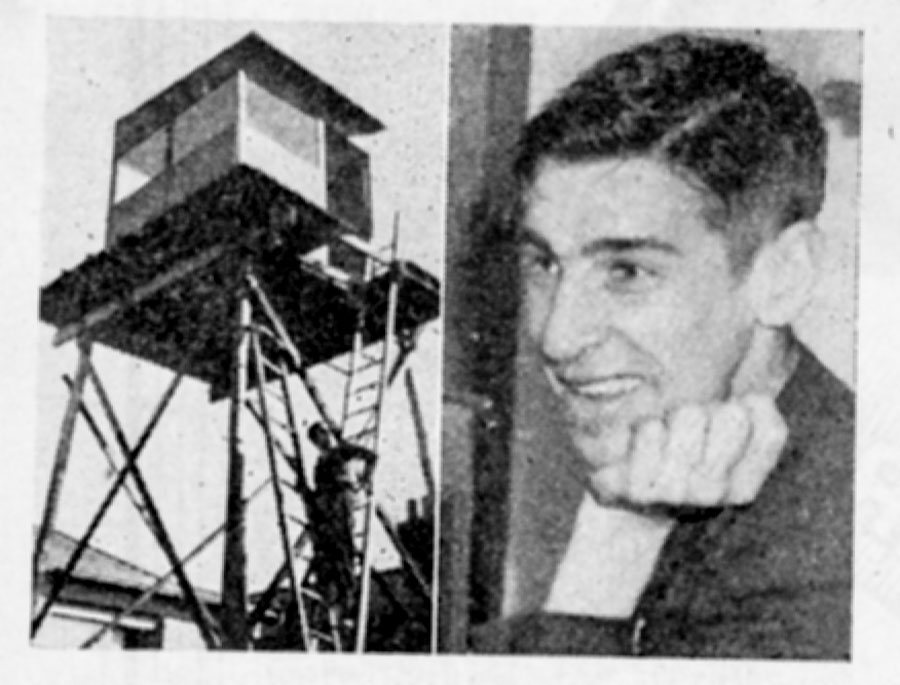
Using his shortwave radio and the VAOC network, Mr Stuart had a major role in saving at least three aircraft which had been in trouble. One example of his work was cited in the May 1944 issue of the bulletin, as follows:
A Douglas with one engine out of order was saved from crashing in the darkness by VAOC members, particularly Mr Ronald McDouall Stuart, of Stockton, near Newcastle, who picked up its radio distress signals on a short-wave set he has installed in the observation post. The plane was coming from Brisbane to Sydney when several posts reported that it was flying on only one engine and circling as if in distress. Mr Stuart heard the plane calling Mascot on the radio, but the signals were not being received. His report was passed on to the RAAF, which arranged to light up a nearby aerodrome and guide the plane in. It is Mr Stuart’s second save, as he gave similar valuable assistance to a Liberator last October. First intimation that the Douglas was in trouble was provided by the observers on duty at Medowie post, Mrs R. James, chief observer, and her son David.
Mr Stuart was back in the bulletin again in October 1944:
Once again Mr R. McD. Stuart, Chief Observer at Stockton, in the Newcastle Zone, has played a leading part in the saving of an aircraft. This plane was a Douglas transport, carrying 26 passengers from Townsville to Mascot. It became lost in bad weather at night, and Mr G.A. McDonald, of the Newcastle control, phoned from Cardiff when off duty to report that it was circling and discharging distress flares and giving SOS signals. The controller on duty, Mr J.H. Pragnell, contacted a nearby RAAF station to arrange for the aerodrome to be prepared for a landing, and requested Mr Stuart to try and pick up the plane’s bearings on his short-wave wireless set, with which he has been able to aid two aircraft on previous occasions. He ascertained that it was running short of petrol, and a searchlight was used to guide it to a safe landing at the drome.
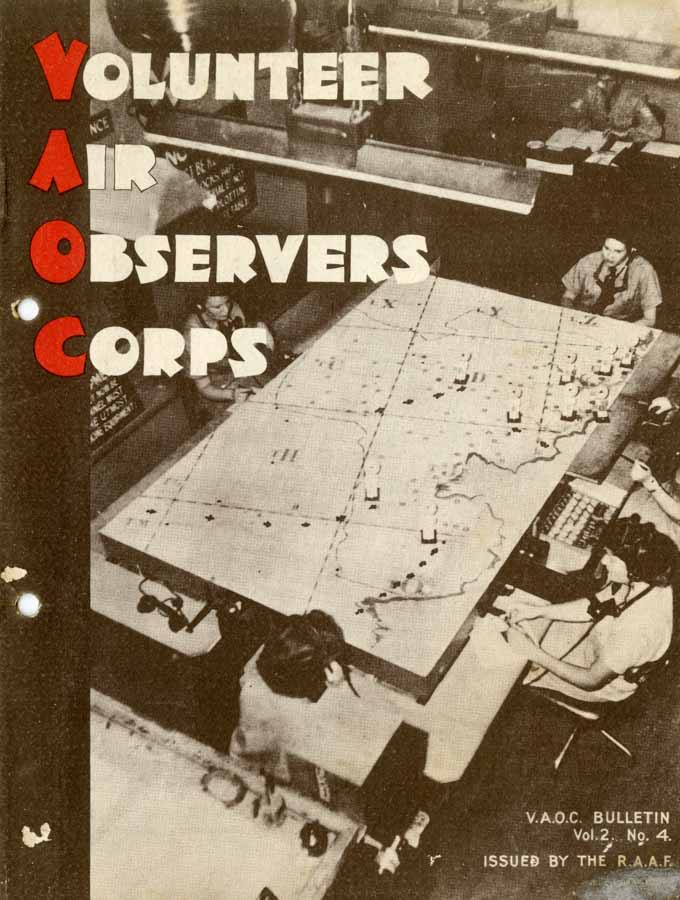
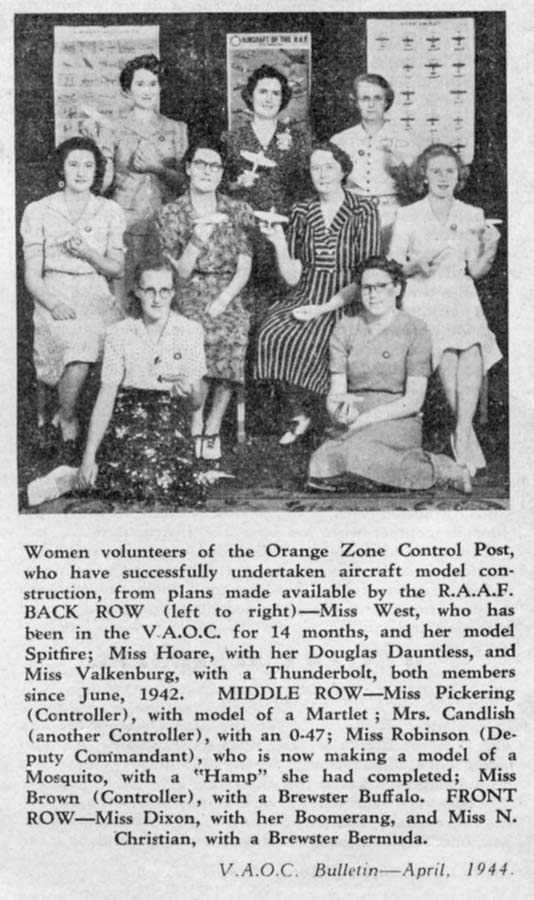
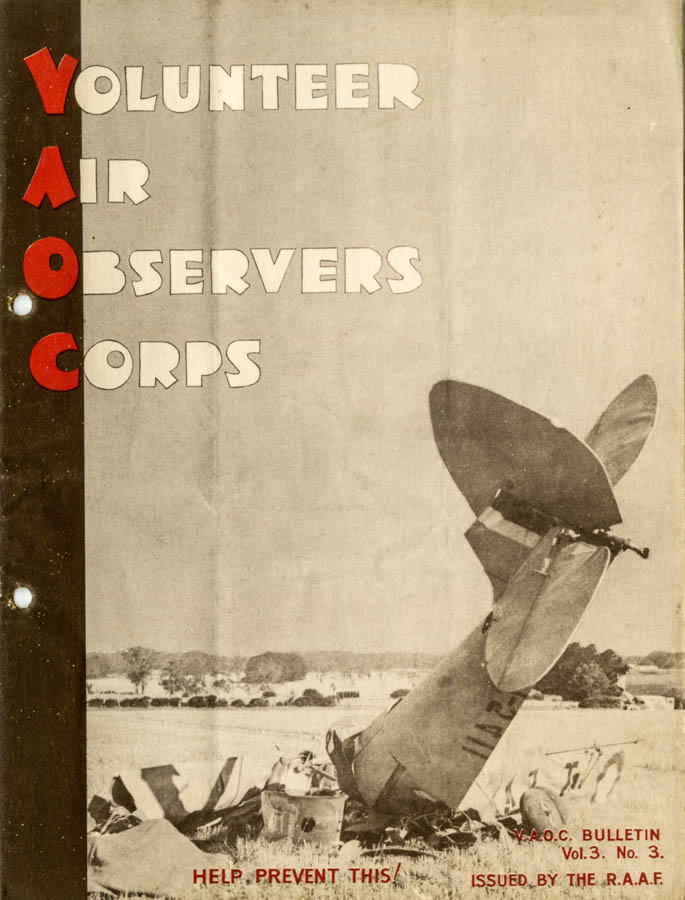
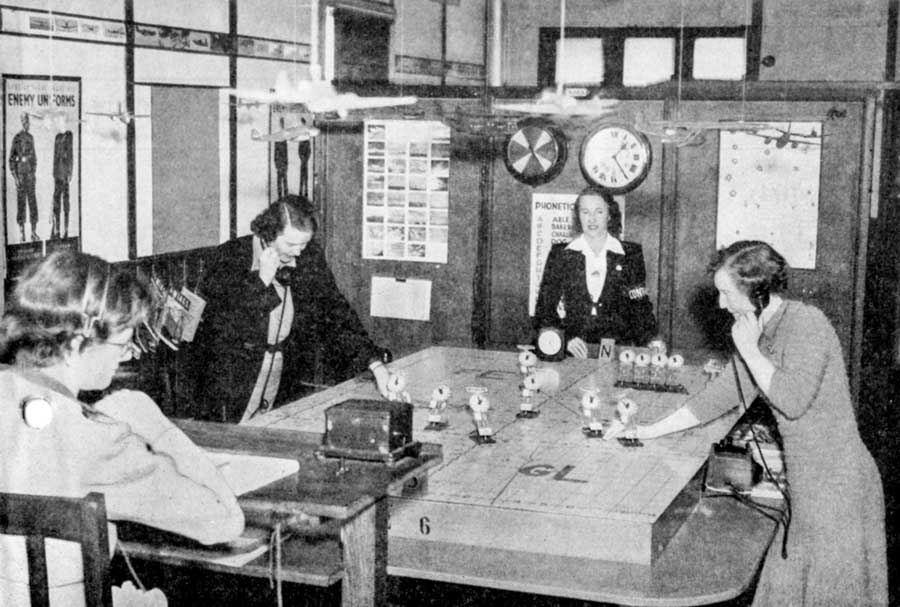
Control room at Kingaroy, Queensland.
Mr Stuart was just one illustrious example of many volunteers who gave thousands of hours of service. Another example, from the April 1944 bulletin, follows:
One of the most dramatic episodes in which the VAOC has been involved for some time occurred recently in the Newcastle zone, when an observer saw an airscrew and its engine fall from a transport plane and 15 of its passengers leave the aircraft by parachute before it crashed. The skywatcher concerned was Mrs G.M. Andrews, wife of the chief observer of the Wollombi post. She was on duty when the accident happened, and immediately reported all particulars, adding that the plane had been rapidly losing height and had disappeared out of sight over a ridge. Control arranged for ambulances to be despatched to the spot from Cessnock, through the observation post at Abermain. Mr Andrews, the Wollombi chief observer, notified the police and went in his own car in search of survivors. All were picked up safely, with the exception of two whose injuries were fatal. The plane crash was located and those still left in it, none of whom was badly hurt, were rescued. Appropriate services were contacted and the Air Force guided to the plane by Mr Andrews, who next day also recovered the airscrew. The VAOC played an important part in this mass rescue by its quick communications and prompt arrangements for medical aid.
And in December 1944 the following:
Two eighteen-year-old girls volunteers on duty at the Scone control post have been congratulated by the RAAF on their efficient work when a Beaufighter was lost in the area recently. They were Misses E. Turner and L. Johnston, who were requested, when it became obvious that the plane was flying an erratic course, to put all observation posts on special alert and pass on to the Air Force all possible information regarding its movements. This was done in the minimum time and full reports passed on of the aircraft’s movements, resulting in it being contacted by radio and landing safely on the Quirindi landing ground before its fuel ran out. The pilot contacted the chief observer, Mrs Benson, who provide transport and accommodation and arranged a guard for the plane. Contact was made with his base and all necessary instructions passed to him.
Bob Hope’s impromptu concert
The September 1944 bulletin carries a report relating to one of the most celebrated VAOC episodes on the NSW coast:
A personal call was made by Bob Hope, famous American film comedian visiting Australia, at the Taree control to thank members of the VAOC for their help when he and his party made a forced landing in their Catalina. The visitors, who are in this country to entertain the troops, were flying from Brisbane to Sydney when engine failure necessitated a forced landing on the Haven River, near Laurieton. The chief observer of the Laurieton post, Mrs I.M. Grierson, was on duty and saw the flying boat land and then become grounded on a sandbank. She reported the incident and then hurried to the river bank. Under the supervision of herself and local police the Americans were brought ashore by fishermen. The pilot, Lieut. Fergusson, USAAF, had never before flown in Australia, so was grateful for the help of the VAOC in contacting the RAAF and US air authorities, arranging for extra transport, repair and salvage facilities and accommodation. That night the party gave an impromptu concert in Laurieton in aid of local patriotic funds, and next morning, en route to Williamtown to board a special plane sent to pick them up, Bob Hope asked if he might stop at the Taree control to thank the members and the commandant, Mr J. Dyball.
Read more about the Bob Hope episode here:
